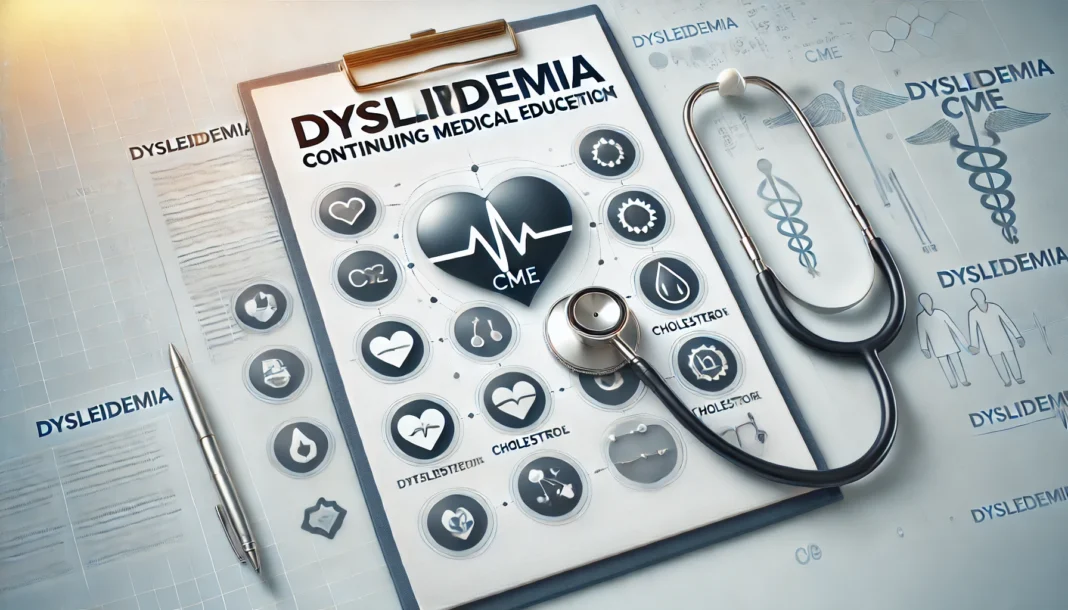Dyslipidemia is a condition mainly characterized by abnormal cholesterol levels in the blood and is a silent yet significant health concern. It may not go unnoticed, but it can lead to some serious problems like heart disease and stroke. As a healthcare expert, understanding dyslipidemia is crucial for providing effective patient care and preventing these devastating consequences.
What is Dyslipidemia, and Why It Matters?
Dyslipidemia is a condition characterized by an imbalance of cholesterol in the blood. Cholesterol and triglycerides are essential fats, but too much of either can lead to serious health problems.
Dyslipidemia is a widespread condition affecting millions of people worldwide. The exact prevalence varies depending on age, diet, and lifestyle. However, many individuals are at risk, often without realizing it.
Dyslipidemia Risk Factors and Their Implications
Dyslipidemia arises from various risk factors that significantly impact cholesterol and triglyceride levels. Genetics plays a crucial role; individuals with a family history of heart disease or high cholesterol are at a greater risk. Lifestyle choices are also critical contributors. An unhealthy diet that has saturated fats and sugars, coupled with a sedentary lifestyle and smoking, can lead to imbalances in lipid levels.
Additionally, certain medical conditions can exacerbate dyslipidemia. For example, diabetes can alter lipid metabolism, leading to higher triglyceride levels and lower HDL (good cholesterol). Hypothyroidism, characterized by reduced thyroid hormone production, can also result in elevated cholesterol levels. Understanding these risk factors is vital for healthcare providers, as they can help identify at-risk individuals and implement appropriate screening, education, and intervention strategies to mitigate the long-term implications of dyslipidemia, including heart disease and stroke. Early recognition and lifestyle modifications can significantly improve patient outcomes.
Importance of Early Detection and Intervention
The importance of early detection and intervention to manage dyslipidemia cannot be overstated. Dyslipidemia is often asymptomatic, meaning that individuals may not realize they have abnormal cholesterol or triglyceride levels until serious complications arise, such as heart disease or stroke. Therefore, proactive screening and assessment of risk factors are essential. Healthcare providers mainly identify at-risk patients by evaluating their family history, lifestyle choices, and existing medical conditions.
Providers can facilitate early diagnosis by implementing routine lipid panels and educating patients about the significance of monitoring their lipid levels. Once dyslipidemia is detected, timely intervention can be initiated, including modifications in normal lifestyle, dietary changes, and, if necessary, pharmacological treatments. Addressing risk factors early on helps prevent the condition’s progression and significantly lowers the likelihood of severe cardiovascular events.
Furthermore, early intervention enhances patient outcomes and empowers individuals to take charge of their health. By fostering open communication about lifestyle choices and treatment options, healthcare providers can motivate patients to adhere to their management plans, ultimately improving overall cardiovascular health and quality of life.
Leveraging CME for Better Management of Dyslipidemia
Continuous Medical Education (CME) is a powerful tool for healthcare experts to stay updated on the latest advancements in dyslipidemia management. By participating in Dyslipidemia CME programs, you can:
- Enhance your knowledge: Learn about the latest guidelines, diagnostic tools, and treatment strategies.
- Improve patient outcomes: Implement evidence-based practices to reduce the risk of heart disease and stroke.
- Stay compliant with licensing requirements: Fulfill CME credit requirements to maintain your license.
Practical Tips for Managing Dyslipidemia in Practice
Here are some practical tips for managing dyslipidemia in your practice:
- Take a comprehensive patient history: Inquire about family history, lifestyle factors, and medical conditions.
- Perform a thorough physical exam: Check for signs of cardiovascular disease, such as increased blood pressure or elevated heart rate.
- Order appropriate laboratory tests: Test for cholesterol, triglycerides, and other relevant biomarkers.
- Educate patients about lifestyle modifications: Encourage patients to adopt a healthy diet, exercise regularly, and quit smoking.
- Prescribe appropriate medications: Consider statins, fibrates, or other lipid-lowering medications as needed.
- Monitor treatment response: Regularly assess lipid levels and adjust treatment as necessary.
- Collaborate with other healthcare providers: Work with cardiologists, endocrinologists, and other experts to give comprehensive care.
Collaborating with Patients for Better Adherence
Effective patient-provider communication is essential for successful dyslipidemia management. Here are some tips for building strong patient-provider relationships:
- Listen actively: Pay attention to your patient’s concerns and questions.
- Use plain language: Explain complex medical concepts in simple terms.
- Set realistic goals: Work with patients to develop achievable treatment plans.
- Provide ongoing support: Encourage patients to stay motivated and adhere to their treatment plan.
Conclusion
A thorough understanding of dyslipidemia is vital for healthcare professionals dedicated to improving the care of patients and outcomes. By recognizing the significance of cholesterol and triglyceride imbalances, you can implement early detection strategies and personalized interventions to mitigate cardiovascular disease risk significantly.
Engaging in Dyslipidemia CME empowers you to inform you about the latest guidelines and treatment options, allowing you to apply evidence-based practices in your clinical setting. By fostering strong relationships with your patients and encouraging lifestyle modifications, you can transform their health and enhance their quality of life.



